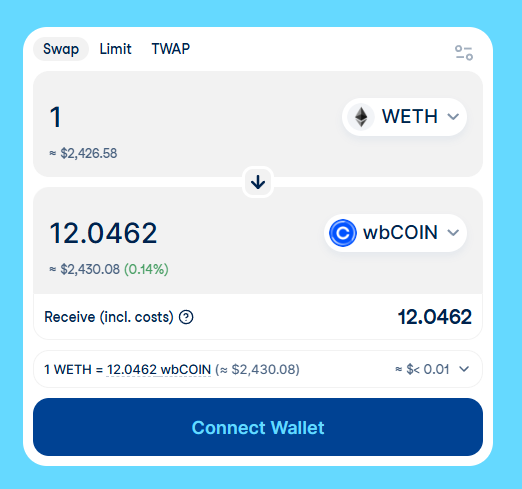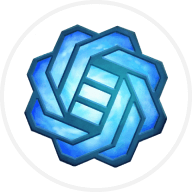Kyber Network (KNC) ist ein Liquiditätsprotokoll, das auf dem Ethereum-Netzwerk basiert und einen nahtlosen Token-Austausch ermöglicht. Durch seine API-Unterstützung erleichtert Kyber Network die Integration mit verschiedenen dezentralen Anwendungen (DApps), sodass Benutzer Token direkt aus ihren Wallets handeln und austauschen können.
Das Protokoll gewährleistet sichere und dezentrale Multi-Chain-Liquidität und unterstützt die Entwicklung von Anwendungen wie dezentralen Finanzplattformen (DeFi) und dezentralen Börsen (DEXs). Kyber Network legt Wert auf Geschwindigkeit und Erschwinglichkeit, um effiziente und zugängliche Token-Handelserlebnisse zu bieten.
Was ist das Kyber-Netzwerk?
Kyber Network ist ein Liquiditätsaggregator und ein Multi-Hub-Netzwerk von Liquiditätsprotokollen, das sich auf die Vereinfachung und Verbesserung des Zugangs zu DeFi konzentriert. KNC, auch bekannt als Kyber Network Crystal, ist der native Token des Kyber Network-Ökosystems. Es dient mehreren Zwecken innerhalb des Netzwerks, einschließlich der Beteiligung an der Governance, der Verteilung von Belohnungen und der Zahlung von Gebühren.
Das Kyber Network-Team
Das Kyber Network-Team besteht aus verschiedenen Personen, darunter Loi Luu, der Gründerin von Kyber Network; Thong Tran, ein Smart-Contract Ingenieur; und Quoc-Cuong Tran, ein DeFi-Forscher. Zum Team gehören weitere namhafte Mitglieder, die zur Entwicklung und zum Erfolg des Projekts beitragen. Darüber hinaus fungierte Vitalik Buterin, der Mitbegründer von Ethereum, als Berater des Kyber Network-Projekts und stellte Anleitung und Fachwissen zur Verfügung.
Wie funktioniert das Kyber-Netzwerk?
Kyber Network ermöglicht einen schnellen Kryptowährungshandel durch die Konsolidierung mehrerer Liquiditätsanbieter und die Erleichterung des Token-Swaps mit hoher Liquidität. Liquiditätsanbieter innerhalb des Ökosystems werden für die Bereitstellung von Liquidität belohnt. Die Art der Belohnungen hängt von der Art des Handels ab, den der Liquiditätsanbieter unterstützt. Wenn die Liquidität dazu gedacht ist, den Handel zwischen ETH und USDT zu unterstützen, erhält der Anbieter ETH-Belohnungen.
KyberSwap.com, ein DEX, ist das beliebteste Produkt des Ökosystems. Diese Plattform hilft Ihnen, die besten Kurse für Token-Swaps zu erhalten, indem Sie mehrere dezentrale Börsen prüfen. Neben der Beschaffung von Liquidität aus DEXs verfügt Kyber Network auch über KyberDAO zur Angebotsprüfung, das Elastic Protocol für den Zugriff auf maßgeschneiderte Liquiditätspools, eine Entwicklerplattform, einen dynamischen Market Maker und eine „Discover“-Funktion zur Identifizierung von Trend-Tokens.
Der native Token von Kyber Network: KNC
KNC oder Kyber Network Crystal ist der native ERC-20, der für das Ökosystem wichtig ist. Es fungiert sowohl als Governance- als auch als Utility-Token und bietet Absteckfunktionen. Mit einer festen Angebotsobergrenze von 223,36 Millionen Token können KNC-Inhaber ihre Token innerhalb der KyberDAO einsetzen, um an der Abstimmung über bestimmte Vorschläge teilzunehmen. Staker erhalten ETH als Belohnung für ihre Teilnahme.
KNC-Anwendungsfälle
KNC-Token haben innerhalb des Kyber-Netzwerk-Ökosystems mehrere Anwendungsfälle. Zusätzlich zu ihrer Rolle als Governance-Token und der Unterstützung für das Abstecken innerhalb von KyberDAO tragen KNC-Token zum Netzwerkwachstum bei. Sie können sich in DeFi-Plattformen integrieren und KNC-bezogene Liquidität an zentralisierten Börsen (CEXs) und DEXs bereitstellen.
Ein interessanter Anwendungsfall des KNC-Tokens ist seine Rolle in der Gebührenstruktur von Kyber Network. Immer wenn ein bestimmtes Token-Paar über das Netzwerk gehandelt wird, wird eine geringe Gebühr gezahlt. Diese Gebühren werden verwendet, um KNC-Tokens vom Markt zurückzukaufen. Die gekauften Token werden dann verbrannt, was einen deflationären Effekt auf das Token-Angebot hat. Der Rückkauf- und Zerstörungsprozess wird durch Smart-Contracts durchgeführt, wodurch ein vertrauenswürdiger und transparenter Mechanismus gewährleistet wird.
KNC-Verteilung
Der anfängliche Verteilungsplan für KNC-Token ist wie folgt beschrieben:
- 34,48 Prozent der KNC-Token sind für Privatverkäufe und frühe Projektinvestoren bestimmt.
- 26,54 Prozent wurden über den öffentlichen Verkauf verteilt.
- 19,35 Prozent der Token werden dem Team zugeteilt. Alle diese Token sind jetzt freigeschaltet.
- 19,63 Prozent sind für die eigenen Reserven von Kyber Network reserviert.
Wie einzigartig ist Kyber Network?
Kyber Network zeichnet sich als Liquiditätsnetzwerk durch die erfolgreiche Unterstützung von über 100 Projekten seit seiner Gründung aus. Seine Vielseitigkeit wird durch den Einsatz auf verschiedenen Blockchains deutlich, darunter Binance (BNB), Polygon (MATIC), Fantom (FTM) und mehr. Diese umfassende Integration über mehrere Ketten hinweg trägt zur Glaubwürdigkeit, Popularität und Akzeptanz von Kyber Network in der Krypto-Community bei.

























